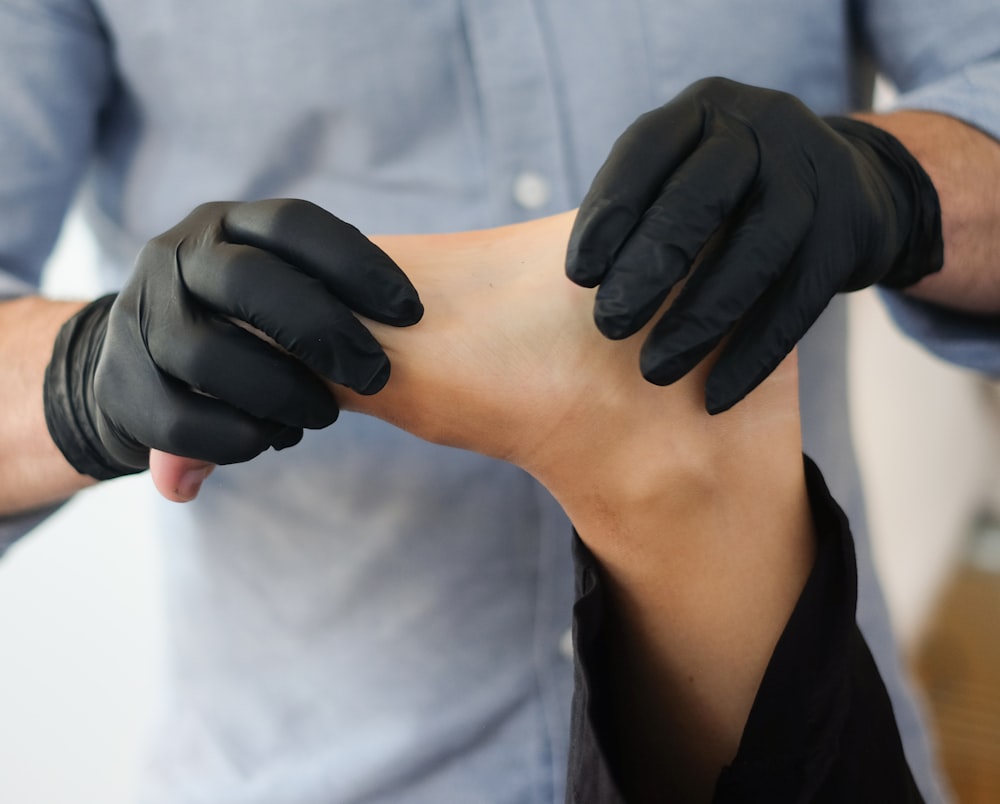目次
外側広筋・皮下組織間の滑走性からみた筋膜の定量的解析-工藤研究室からの最新論文-
大腿骨転子部骨折例,人工膝関節全置換術(TKA)例をはじめ外側広筋・皮下組織間の滑走性低下をきたす症例は少なくないと思います.
理学療法士・作業療法士の間では「癒着」という用語が流行しておりますが,この組織間の滑走性低下に関してはまだまだブラックボックスの部分が大きいのも実際です.
今回は森之宮医療大学の工藤先生の研究室から出された外側広筋・皮下組織間の滑走性に関連する報告をご紹介させていただきます.

今回ご紹介する論文
Journal of Bodywork and Movement Therapies
Volume 24, Issue 4, October 2020, Pages 316-320
Quantitative analysis of gliding between subcutaneous tissue and the vastus lateralis – Influence of the dense connective tissue of the myofascia
Author links open overlay panelKengoKawanishiabShintarouKudoac
今回ご紹介する論文は2020年に掲載された新しい論文です.
研究の背景
The thickness of connective tissue has been shown to be associated with pain (Stecco et al., 2014). However, the relationship between fascial thickness and gliding remains unclear. In addition, the influence between gliding and the motion rhythm and limb position isn’t clear.
結合組織の厚さは痛みと関連することが明らかにされております(Steccoら,2014).
しかしながら筋膜の厚さと滑走性との関係は明らかではありません.
また組織間の滑走性とと運動リズムや関節の測定肢位との関連性も明らかではありません.
研究の方法
A therapist moved patient’s lower leg at one of two constant rhythms (40 or 60bpm). Gliding of both the vastus lateralis (VL) muscle and subcutaneous (SC) tissue were recorded during knee motion using ultrasonography. Particle image velocimetry analysis software was adapted to create the flow velocity from echo imaging. Gliding was calculated using a coefficient of correlation from each flow velocity. Myofascial thickness and SC were measured using Image-J. The ratios of the loose connective tissue (LCT) and dense connective tissue (DCT) thickness to the total myofascial thickness were calculated. Repeated-measures two-way ANOVA was used to compare the two motion rhythms and three positions, with stepwise multiple regression analysis to analyze the predictors that influenced the gliding coefficient at each rhythm.
セラピストがクライアントの下肢を2つの一定のリズム(40または60bpm)で可動させた際の膝関節運動中の外側広筋と皮下組織間の滑走性を超音波検査を用いて記録しております.
エコー画像から流速を作成するために,粒子画像流速解析ソフトウェアを用いております.
各流速から相関係数を用いて滑走性を評価しております.
外側広筋および皮下組織の厚さはImage-Jを用いて測定し,緩い結合組織(LCT)と密な結合組織(DCT)の厚さの総筋膜厚に対する比を計算しております.
2つの運動リズムと3つの測定肢位を比較するために二元配置分散分析(反覆測定)を使用し,各リズムにおける滑動係数に影響を与える因子についてステップワイズ重回帰分析を用いて分析を行っております.
研究の結果
Repeated-measures two-way ANOVA showed that the effect of rhythm was statistically significant, but the effect of position was not. At a 40 bpm rhythm, stepwise multiple regression analysis selected SC thickness and DCT thickness as significant factors, while at a 60 bpm rhythm, SC thickness and DCT ratio were selected.
反復測定二元配置分散分析の結果,運動リズムによる主効果は統計的に有意でありましたが,測定肢位の主効果は認められませんでした.
40 bpmのリズムでは,ステップワイズ重回帰分析で滑走性に影響を与える要因として結合組織の厚さが抽出され,60 bpmのリズムでは皮下組織の暑さと結合組織の厚さの総筋膜厚に対する比が抽出されております.
研究の結論
This study revealed that increased thickness of DCT of the myofascia and SC resulted in decreased gliding between the VL and SC, demonstrating that gliding is related to fascial thickness. Motion rhythm influences gliding between tissues.
この研究結果から外側広筋および皮下組織の組織厚が増加すると,外側広筋と皮下組織間の滑走性が低下することが明らかとなりました.
また滑走性が筋膜の厚さと関連していることが明らかとなり,運動のリズムは組織間の滑走性に関連することも明らかとなりました.
今回は森之宮医療大学の工藤先生の研究室から出された外側広筋・皮下組織間の滑走性に関連する報告をご紹介させていただきました.
非常に興味深い研究ですね.
組織間の滑走性を考える上では組織厚が重要であること,また筋膜の厚さが重要であるということですね.
また組織間の滑走性の改善を図るためには運動のリズムに着目したアプローチが有効かもしれませんね.
今後のさらなる研究が待たれますね.








コメント